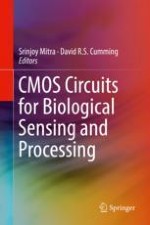2018 | OriginalPaper | Chapter
7. Design and Optimization of ICs for Wearable EEG Sensors
Authors : Jiawei Xu, Rachit Mohan, Nick Van Helleputte, Srinjoy Mitra
Published in: CMOS Circuits for Biological Sensing and Processing
Publisher: Springer International Publishing
Activate our intelligent search to find suitable subject content or patents.
Select sections of text to find matching patents with Artificial Intelligence. powered by
Select sections of text to find additional relevant content using AI-assisted search. powered by
